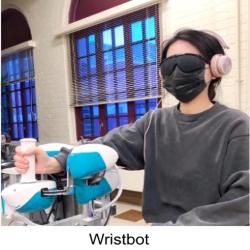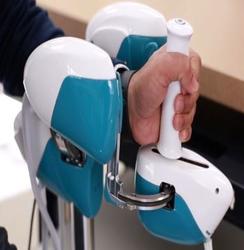Robotic Rehabilitation of Wrist and Hand Function

Our group has been involved in the research and development of a robotic exoskeleton to objectively assess and train proprioceptive and motor functions of the hand/wrist. This device is developed in collaboration with colleagues at the Heidelberg University in Germany and the Italian Institute of Technology. The laboratory has received grant support from the National Science Foundation, the National Institutes of Health, and the University of Minnesota to support this research.
Dyad Motor Learning in Stroke Survivors

Dyad learning (dyad = a pair, two) is a form of learning where two learners practice in pairs. They typically alternate between physical practice (physically performing the task themselves) and observing the other person performing the task. Previous research shows that dyad learning leads to better learning outcomes and reduced practice time required to learn complex motor tasks during microsurgery or flight simulator training.